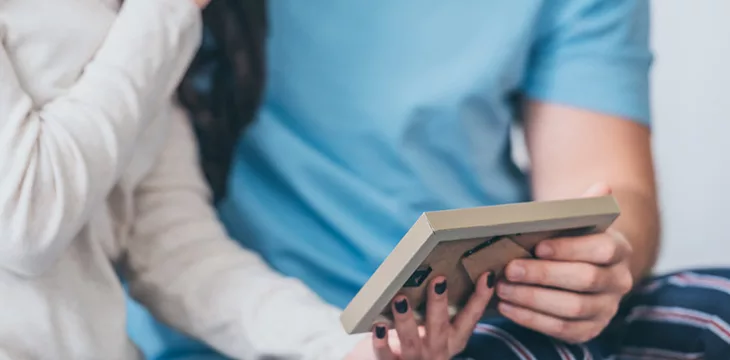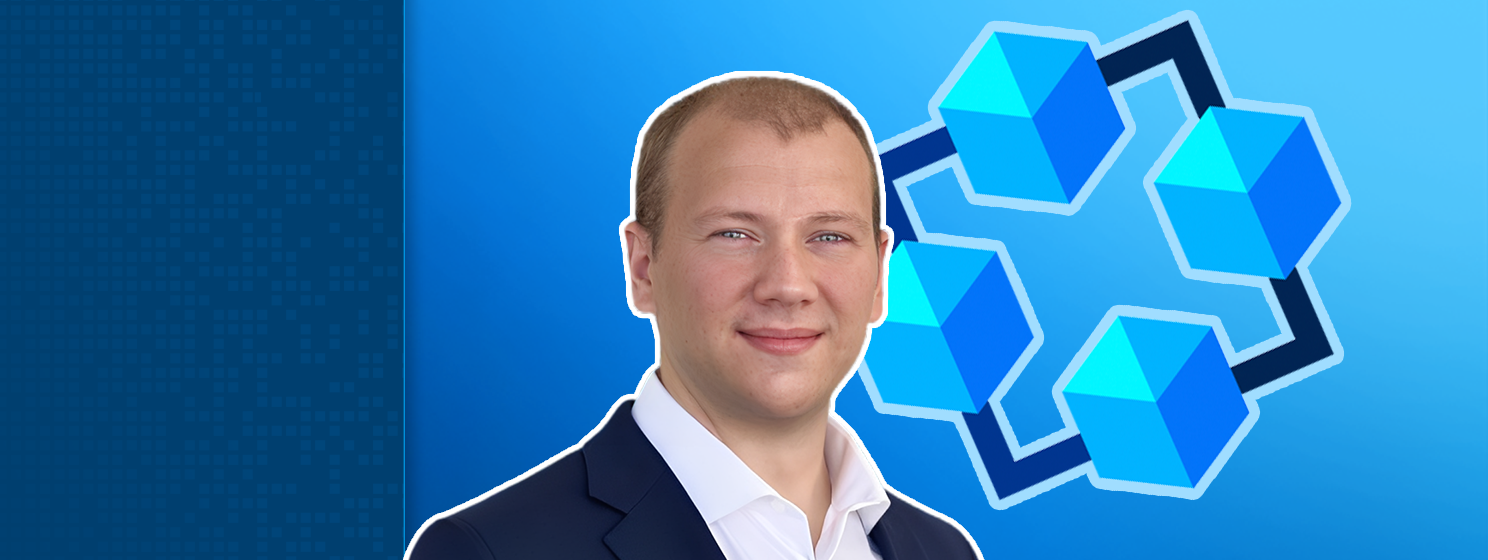|
Getting your Trinity Audio player ready...
|
In a world where memories can fade, and physical monuments can erode, how do we preserve the essence of our existence for future generations? This article delves into a groundbreaking solution that intertwines the poignant human desire to remember and be remembered with the robust capabilities of cutting-edge technology. Exploring the novel concept of using Ordinals on the BSV blockchain, it guides us through the potential of inscribing our most cherished memories in a form that transcends time and change. From reflecting on our connections to the past to offering a practical guide to inscribing Ordinals, this piece invites you on a thought-provoking journey to see how we might etch our legacies into the digital realm.
Are you ready to explore a future where your memories could last forever? Read on to discover how technology reshapes our relationship with history and memory.
A little over a year ago, we said goodbye to a beloved member of our family, a man who lived in full before he passed away from old age. We have all encountered, or will, the painful experience of losing a special someone.
So, what happens when we’re faced with the inevitable? Across the globe, families grapple with laying their loved ones to rest through burial or cremation. For centuries, we’ve sought solace by visiting graves, cemeteries, and memorials to honor and remember those we’ve lost. But there’s an aspect we often overlook: the upkeep of these sites, which is not just about physical maintenance but also a financial commitment.
Let’s fast forward to the future, say a decade, a half-century, or even a few centuries from now. Will these gravesites be maintained? Will they still exist? The sad reality is that most people are eventually forgotten. No one will know their names, and no one will know what they look like. No one will know their stories.
Not long ago, I stumbled upon a thought-provoking post on a Facebook page, ‘Africa is Home.’ It is titled, ‘150 Years from now‘1. I will not quote the entire post but just the relevant sections below:
150 years from now, none of us reading this post today will be alive… Everything we are fighting over right now will be totally forgotten…
If we go back memory lane to 150 years before us, that will be 1873, none of those that carried the world on their heads then are alive today. Almost all of us reading this will find it difficult to picture anybody’s face of that era.
Pause for a while and imagine how some of them betrayed their relatives and sold them as slaves for a piece of mirror. Some killed family members just for a piece of land or tubers of yam or cowries or for a pinch of salt. Where is the yam, cowries, mirror, or salt that they were using to brag? It may sound funny to us now, but that is how silly we humans are sometimes, especially when it comes to power or trying to be relevant…
The land you are fighting and ready to kill for, somebody left that land, the person is dead, rotten, and forgotten. That will also be your fate. In 150 years to come, none of the vehicles or phones we are using today to brag will be relevant…
To preserve our roots, some cultures, like the Irish, meticulously document genealogical records. Genealogy helps us to understand our past, validating our identities by tracing our ancestral lineage.
Traditionally, we’ve verified our ancestry through tangible documents preserved in libraries or government institutions. These records, though, offer only basic facts—like date and place of birth, names of parents and spouse, and date of passing. Genealogy websites now provide a digital solution that can provide more information about people, but they, too, are vulnerable to data loss if the business or the website shuts down.
That brings me to the focus of this article: the power of blockchain technology, specifically using Ordinals on the BSV, to safeguard our precious memories. Once we upload these memories as photos, images, writings, sound files, or videos as Ordinals, they’re copied across a network of computers worldwide. As long as Bitcoin stays in use, these files are preserved forever.
Most of us have used, or still use, Facebook (NASDAQ: META). You have uploaded a photo to Facebook, right? Your photo will remain accessible until Facebook either shuts down or is overtaken by a new platform. But imagine if instead of uploading your pictures to Facebook, you could upload them to the Internet. That’s what uploading to the blockchain is like—it’s not limited to a single platform but is spread across the web. Even if a website disappears, your files are still there for another website or you to access.
It’s a bit technical and may seem vague, so to make things easier and more specific, let’s walk through a practical demonstration of how to inscribe an Ordinal. It’s simpler than it sounds—I promise!
How to upload a memory as an Ordinal on the BSV blockchain
Embarking on the journey of inscribing Ordinals onto the blockchain via 1 Sat Ordinals is relatively straightforward. This platform was one of the pioneers in facilitating the development of Ordinals on the BSV blockchain.
Getting started involves navigating to the site and familiarizing yourself with its layout. Key areas include:
- The wallet section, where you can either import or generate a new wallet, and the inscription area for creating Ordinals
- The marketplace for Ordinals transactions
- The collection section, where you can view and offer Ordinals for sale
- The BSV20 section allows for the creation of fungible tokens
- The listings section where you create new listings of Ordinals for sale
To kickstart the process, generate a new wallet since there is none to import. The subsequent display presents two keys: the private key for the paying wallet, used to pay for inscriptions, and the private key for the Ordinal wallet, where your Ordinals will be stored. For those unfamiliar with public and private keys, refer to an earlier article on these concepts: “Mastering Bitcoin wallets: Combining Electrum SV, RockWallet and HandCash for optimal use2” Remember to safely store these keys, as they are irrecoverable if lost. For convenience, a backup JSON file is also available for download.
After setting up the wallet, you will be redirected to the main wallet page, which shows your balance (initially zero). You will notice two buttons—”Add Money” and “Cash Out.” The Add Money button lets you deposit BSV into your 1SatOrdinals wallet. Using a convenient method such as a QR code scan is recommended for this process. A transaction ID will be generated, which you can view on a blockchain explorer like WhatsOnChain.
Once your wallet is funded, you are ready to inscribe an Ordinal. For instance, if you are inscribing an image, you must choose a file from your local hard drive. Metadata can be added to provide additional context or information about the inscription. After you’ve filled in the details, you can broadcast the request.
While the process is in motion, there might be lag before the Ordinal appears in the wallet. However, it can already be viewed on the blockchain explorer. Each inscription is timestamped, and once confirmed on the blockchain, it can be viewed on your 1SatOrdinals wallet.
If you wish to inscribe another Ordinal, repeat the process. After you’ve inscribed multiple Ordinals, you can compare their transaction IDs and check which block they’ve been inscribed on.
Every inscription gets a unique Ordinal number, lower for earlier uploads and higher for later ones. You can click on the Ordinal number to view its details, such as the filename, note, transaction ID, and the app used.
1SatOrdinals is a fantastic platform to inscribe Ordinals on the BSV blockchain. It’s user-friendly, efficient and makes the inscription process seamless and enjoyable. Always save your private keys safely and ensure your wallet has enough BSV before starting the process.
Once you have uploaded your ordinals to the blockchain, they are also accessible using other apps or websites—like Aym.World and Mornin.Run—that can work with ordinals and the BSV blockchain.
After going through the above examples, I hope you have gained a better understanding of the Ordinals. You might realize that it’s familiar territory. You already use websites to upload files, but instead of the files going to the website’s database, they’re uploaded to the Blockchain. This implies that other sites that can tap into the blockchain and access Ordinals will also be able to view yours.
Be careful with what to upload to the blockchain
While websites may come and go, your Ordinals stay on the Blockchain indefinitely. This is the inherent strength of using Ordinals, but it also brings its own set of challenges. Any content you upload—an image, document, video, or audio file—is stored there permanently. As of now, there’s no way to retract or delete it. I’m unaware of any feature allowing you to delete Ordinals from the blockchain, as it is inherently unchangeable.
Perhaps in the future, block explorers like WhatsOnChain will introduce services that would enable Ordinal owners to control access to their content. But for now, here are a few things to consider before uploading data to the blockchain:
- Get permission before uploading a photo of someone to the extent that it is possible. When it comes to uploading pictures for personal reasons, everyone deserves a say in whether or not their image should be on the blockchain, be it your spouse, children, family member, or close friend.
- Avoid uploading photos of people you don’t know or where there are recognizable people in the background. This prevents you from unintentionally compromising someone’s privacy.
- Avoid posting explicit content, including beach or swimming pool photos with scantily clad individuals.
- Refrain from posting provocative, offensive, or controversial content that could land you in trouble.
- Think about how others would react to the photo. Would it lead to bullying or embarrassment? Would your family, friends, or colleagues be upset by it? If the answer is yes, it’s best not to post it.
- Consider your motivation for posting the photo. If it’s to harm or mock someone, it’s not worth it.
- Due to these potential issues, I recommend posting ‘safe’ photos, like those you would share on LinkedIn or a professional profile.
The considerations above are made in the context of uploading your photos and family and friends to the blockchain. These may not apply to journalistic reporting and in other professional contexts. Beyond these guidelines, using Ordinals to upload cherished memories and communicate with future generations can be very powerful.
The stone in the river
My wife and I cannot have children. But if you have children, imagine 50 or even hundreds of years from now, your descendants could pass on and look you up using only inscription number or transaction hash and see the images and messages you left behind.
I’ll end with some beautiful lyrics translated from a Dutch (Nederlands) song titled ‘The Stone’ (De Steen) by Bram Vermeulen that fit perfectly with our topic.
I have shifted a stone in a river on this earth. Now I know I will never be forgotten. I provided proof of my existence. Because, by shifting that single stone, the stream will never follow the same path.3
This song likens the blockchain to a river, and your uploaded Ordinal to a stone that forever changes the flow of the river. This is not too far from what happens because when you upload an Ordinal to the blockchain, your transaction affects the hash of its containing block, which in turn will affect the hash of all future blocks.
Conclusion
The prospect of utilizing blockchain technology, specifically Ordinals on the BSV blockchain, opens up an exciting and revolutionary avenue for preserving memories and historical records. By inscribing images, videos, writings, and other precious memories onto a medium as immutable and far-reaching as the blockchain, we’re preserving the essence of our existence and building bridges to future generations.
As we grapple with the temporal nature of life and the ephemeral quality of our digital footprints, the ability to etch our legacies into a medium that transcends time and geographical barriers offers a poignant reminder of our connection to our past and future. While the technological aspects might appear complex initially, platforms like 1SatOrdinals have made the process more accessible, bringing this powerful concept within everyone’s reach. Let us approach this technology with caution, respect, and a sense of purpose, understanding that what we upload may become a timeless testament to who we were, what we valued, and the world we shaped.
***
NOTES:
[1] Post title: “150 years from now“, published 18 December 2022, by a Facebook Page called Africa is Home, https://www.facebook.com/search/top?q=150%20years%20from%20now, last accessed 6 August 2023.
[2] “Mastering Bitcoin wallets: Combining Electrum SV, RockWallet and HandCash for optimal use” by Marquez Comelab, published by CoinGeek.com on 27 March 2023, URL: https://coingeek.com/mastering-bitcoin-wallets-combining-electrum-sv-rockwallet-and-handcash-for-optimal-use/, last accessed 06 August 2023.
[3] Original lyrics in Nederlands: “Ik heb een steen verlegd, in een rivier op aarde. Nu weet ik dat ik nooit zal zijn vergeten. Ik leverde bewijs van mijn bestaan. Omdat, door het verleggen van die ene steen, de stroom nooit meer dezelfde weg zal gaan”.
Watch: Ordinals on BSV! Luke Rohenaz explains their Utility and Value on the CoinGeek Weekly Livestream

 09-14-2025
09-14-2025 





